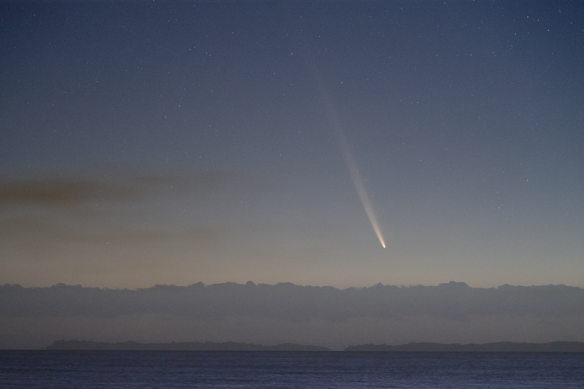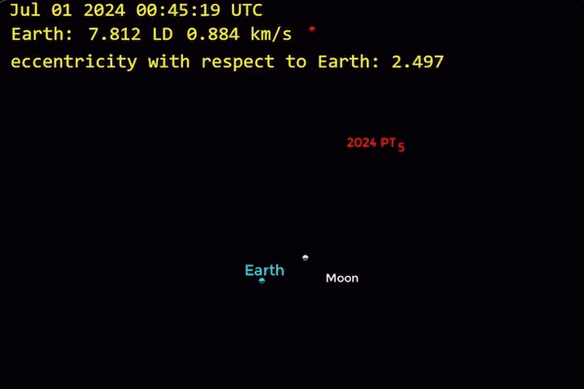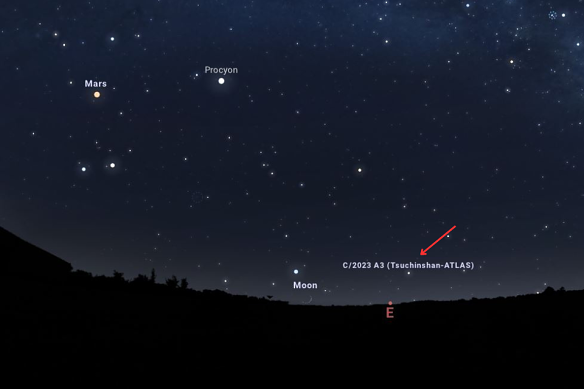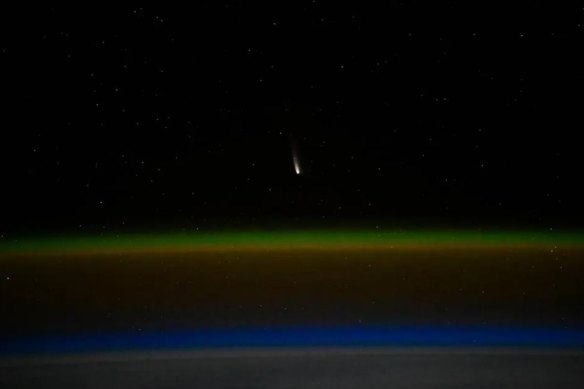By Angus Dalton
Earth on Sunday captured a rarely spotted celestial visitor known as a “second moon”, which has coincided with the best and brightest comet of the year promising to dazzle stargazers with a three-act spectacular.
The second moon is a newly discovered asteroid hurtling at 3540 km/h that has now swung into our planet’s gravitational pull.

Comet C/2023 A3 captured from Auckland, New Zealand before it gears up for an even better show.Credit: Alex Liang
NASA’s asteroid detection system ATLAS (Asteroid Terrestrial Impact Last Alert System) spotted the second moon, named 2024 PT5, in August the day before it started heading towards Earth from the Arjuna asteroid belt, named after a character in the Hindu epic Mahābhārata.
The asteroids normally orbit the sun but some fly at the right speed and trajectory that allow a temporary tryst with Earth’s orbit.
The mini-moon’s horseshoe-shaped path means it’s classified as a temporarily captured “flyby” rather than an “orbiter” like a previous mini-moon locked in our orbit for two years from 2020, said astrophysicist Dr Laura Driessen from the University of Sydney.

An animation of 2024 PT5’s orbit around Earth.Credit: Tony Dunn/@tony873004
“It’s going to stick around for about 57 days,” Driessen said. “Astronomers think that the Earth has one mini-moon less than one metre in size at any given time, but they’re really hard to detect because they’re very small and very faint.
“2024 PT5 is actually only the fifth mini-moon that we’ve ever detected.”
While a large telescope is required to spot the 11-metre mini-moon, a comet discovered in January 2023 is currently visible in the near-dawn sky.
Asteroids are hard-to-spot “space rocks”, but comets are made of dust and ice that vaporise as they approach the sun and generate a blazing tail.
Early risers can spot the comet streaking just above the horizon to the east from about 4am until sunrise.

Where Comet C/2023 will be seen in the sky in the early hours of Monday 30 September about 4.30am.Credit: Stellarium
The comet, named C/2023 A3, reached its closest point to the sun or “perihelion” on Friday and will be visible until October 6 before it dips too close to the horizon and disappears.
But the show won’t be over. Upon its return to the skies on October 9 the comet will potentially flare 100 times brighter when it passes directly between Earth and the sun.
Backlit by the sun, the comet could be visible to experienced observers during daylight due to the “forward scattering” effect which enables the comet’s haze of dust to scatter light towards earthly observers, according to University of Southern Queensland astrophysicist Professor Jonti Horner.

Comet 2023 A3 captured from the International Space Station.Credit: Don Petitt/NASA
The comet’s radiant burst will be very close to the sun and will require the right equipment to observe without risking eye damage.
But there’s an encore for amateur stargazers from October 12, when the comet will be bright and visible again with the naked eye in the early evening as it rockets up western skies.
The comet’s tail could grow to “prodigious lengths” during this time, according to Horner, before the cosmic traveller fades by the end of October and vanishes into space.
The Examine newsletter explains and analyses science with a rigorous focus on the evidence. Sign up to get it each week.